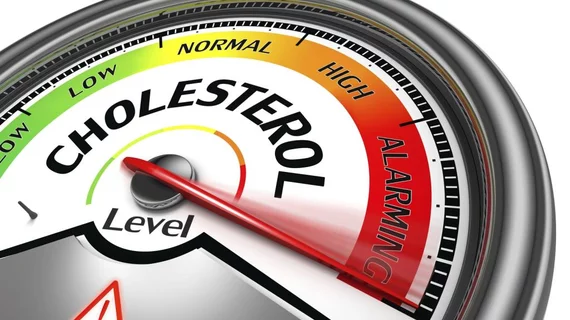A new study published in European Heart Journal suggests a particular quality of LDL cholesterol—not just the concentration of it—influences a patient’s risk of cardiovascular disease.
Namely, LDL particles that are more likely to conglomerate in the blood vessels are independently predictive of cardiovascular death in patients with coronary artery disease (CAD).
"This is the first study to show that there are measurable inter-individual differences in the aggregation susceptibility of LDL particles, and that aggregation-prone LDL is predictive of cardiovascular death,” senior author Katariina Öörni, PhD, with the University of Helsinki in Finland, said in a press release.
The researchers analyzed blood samples from 24 patients who died from CAD and 24 with stable CAD, and compared them to healthy controls. After two hours of incubation, the median aggregates were 1,500 nanometers in the CAD death group, 940 nm in the stable CAD group and 200 nm among healthy individuals. Notably, the initial sizes of LDL particles weren’t associated with the sizes of the assemblages after incubation, suggesting it was the particles’ tendency to lump together which caused the size difference after incubation.
The good news is the authors found that both nutritional and pharmacological solutions reduced the propensity of LDL to aggregate. About two-thirds of people who either followed a healthy Nordic diet or took a PCSK9 inhibitor—a known cholesterol reducer—showed lower LDL aggregation following the intervention.
Öörni et al. noted genetic factors may have caused these interventions to be effective in some participants but not others.
“Prior and current data indicate that aggregated LDL has the potential to promote multiple steps along the atherogenic pathway from LDL retention to maladaptive responses that include initiation and growth of atherosclerotic lesions, plaque destabilization, and plaque rupture,” the authors wrote in the paper. “Any treatment that induces a favorable change in LDL lipid composition offers a means to attenuate LDL aggregation within the arterial wall and its deleterious consequences.”
The researchers also said a predictive biomarker based on patients’ LDL aggregation susceptibility could help identify individuals at high cardiovascular risk who might require targeted treatment.

